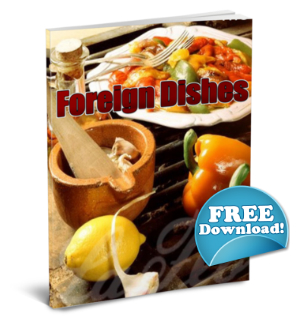To Become A Professional Cook: A Career Resource Guide
August 8, 2013 by admin
Filed under Featured, Kitchen Cooking Guide
So you know you love to cook… But do you want to become a professional chef? If so, where should you begin? How can you make cooking your career?
This career guide provides a quick and easy reference depicting what most professional chefs say about their culinary arts training and their career. Where should you begin? Where should you study to undergo extensive culinary arts training? How do you become an apprentice in a well-known cooking program? Are there shortcuts? What do well known professional chefs say about their path to success? What do chefs make and what is the career outlook for culinary professionals? (We will continue to update this section to provide additional information.)
Overview
Most professional chefs started their careers by spending four years at an accredited culinary art school. The best culinary schools are those that include the Le Cordon Bleu as an important part of their training. (This website provides information from the very best culinary schools. To find a map of cooking schools near you, click here.)
Following culinary school, most career chefs spend at least five years working under head chefs at different restaurants. Typically, they start out as support staff in the kitchen, performing a special task (such as preparing vegetables). Since most young chefs want to be sous-chefs under the top brass at the best restaurants, (particularly in large cities), they often work at several restaurants, acquiring experience under different mentors. Then, they decide to specialize in an area of their primary interests. Professional chefs that are able to withstand the high stress and pressure of the job will find themselves at the helm of a kitchen as head chef. On average, this could take as long as 10 years. To be a head chef means he or she will direct an entire kitchen staff or even start a restaurant.
About Being a Chef
Many chefs view themselves as artists, blending ordinary ingredients to create masterpieces. They are very serious about their careers and many feel drawn to their profession. Most feel it is their calling in life. The apprenticeship is for most chefs rigorous and challenging. And the career isn’t that different. Most work about 50 hours a week, including nights and weekends.
Professional Chefs Enjoy:
• High Prestige
• Creativity
• Constantly being surrounded by food
Professional Chefs Endure:
• Specialized Training
• Long hours
• High stress level
• Potential for career burnout
Characteristics of A Professional Chef:
• Organized
• Opportunistic
• Creative
Where to Start:
Professional Chefs need to get a Certification from a professional cooking school.
The 12 Super Foods That Better Your Health
August 8, 2013 by admin
Filed under Featured, Healthy Food Ideas
There are 12 foods that, if eaten on a regular basis, do wonders for your health. Do you know what they are?
If you’re reading this than you already have some knowledge of how important good nutrition is. I’m a big advocate of “you are what you eat.” Meaning, what you put in your body largely determines what you look like on the outside.
And if you make a serious effort to improve your eating habits, you will notice a positive change in how you look and feel. It’s not about perfection though. Thrive to make small changes to your diet over time and you’ll eventually be amazed at the will power you develop.
There are 12 foods that you should be eating on a regular basis. All have their own unique health benefits and if you mold your diet around the majority of these foods, you’ll notice an improvement in your health.
The list is as follows:
1. Almonds and other nuts- a great source of good fat.
2. Beans and legumes- a great source of fiber and protein.
3. Spinach and other green vegetables- a great source of phytonutrients and antioxidants.
4. Low-fat dairy- a great source of calcium and protein.
5. Oatmeal- a great source of fiber and protein.
6. Eggs- a great source of vitamin E and protein.
7. Turkey and other lean meats- a great source of protein.
8. Natural peanut butter- yes, this can be included under #1, but natural peanut butter makes eating nuts easier because you can spread it on wheat bread, bananas, celery, etc.
9. Olive oil- a great source of good fat.
10. Whole-grain breads and cereals- a great source of fiber.
11. Extra protein- a great source of protein!
12. Raspberries and other berries- a great source of antioxidants.
All 12 foods above have a high nutritional value and should be incorporated into your daily snacks and meals.
I personally bring the list with me food shopping and you might want to consider doing the same.
The Secret To Preparing The Perfect Paella
August 8, 2013 by admin
Filed under Featured, Cooking Recipes and Advices
According to The American Heritage Dictionary of the English Language, paella is a saffron-flavored dish made with varying combinations of rice, vegetables, meat, chicken and seafood. The Dictionary also explains that in the Old French and Catalan languages, paella means frying pan or pot. The traditional paella pan is flat and of large diameter, it can also have handles on each side.
In fact, paella is one of the most versatile dishes to make. Paella also has the advantage of being great to clean out the fridge and use up leftover meats and vegetables. Any combination will eventually be great the secret is in the chemistry. Paella is a dish that is generally made to feed several people. Moreover, paella is quite flavorful the next day as the tastes have had time to mix together and become stronger.
This article is not a recipe but rather an outline that describes the three basic steps to follow to make a wonderful paella while leaving the reader (the chef!) the latitude to be creative and to make the dish their own by customizing it to their taste.
First the rice.
Select a type of rice that you are comfortable using. Feel free to experiment but know that paella contains a lot of ingredients and if you are unhappy with the end result with a particular type of rice, you might end up with a lot of waste. Basmati, brown or a mix with wild rice can add great taste and texture. Follow the instructions on the package with regards to washing and cooking the rice. Finely chop some onion, garlic and tomato. Heat a saucepan and add olive oil once the saucepan is hot (make sure that the oil does not start smoking. Burnt olive oil is carcinogenic and quite unhealthy). Once the oil is hot, throw in the uncooked rice. Frying uncooked rice gives it a nutty taste. Let the rice fry in the saucepan for a minute or so. Add the chopped onion, garlic and tomato until they soften, mixing constantly. Spice with saffron, salt and pepper. Feel free to experiment. Cumin, Cayenne various fine herbs or even a bit cinnamon or cloves can easily be added for a flavoring of your own. This mixture should not be on the stove for more that three to five minutes. At high heat with constant mixing, none of the ingredients should stick but they should mix well together and soften. Once all the ingredients are combined, remove the saucepan from the burner and mix in some frozen peas. Add enough peas to make a well balanced mixture.
Second the meat.
In a frying pan at high heat, brown some pieces of chicken. Upper thighs, drumsticks, breasts…it’s all good. Do not cook the meat completely but brown the outside. Once browned, set the meat aside. Lamb can also add great flavor to your paella.
Third combining it all.
Cover the bottom of the paella pan with the uncooked rice mixture. Add the browned chicken pieces on top. Add uncooked Merguez (spicy lamb sausages) and small fish filets rolled up and fastened with a toothpick or string. Use any type of fish but make sure that its flesh will hold well together. Pour some chicken broth on top (if the broth is warm the cooking time will reduce). Note that you can also add wine for more flavor. Cover the paella dish and cook for about 45 minutes at 350F or until the rice is cooked. At this point you can add raw shrimp or muscles and cook uncovered for another five minutes.
In short, the secret to preparing the perfect paella is to make it your own!
Regional Cuisine Of The United States: California-Style Cooking
August 8, 2013 by admin
Filed under Featured, Cooking Recipes and Advices
The great state of California carries some of the most rich aspects of American culture, from the pioneers to the gold rush to quality cuisine. Bordered by the Pacific Ocean, Oregon, Nevada, Arizona, and Baja, classic California food can take on many forms. The unique cuisine of California is earmarked by a tradition of freshness and home grown quality, calling forth to mind fresh leafy green salads, fruit, and organic just-about-anything.
California is one of the major agricultural centers of the United States. The state of California, as one of the nation’s leading producers of fresh produce, has an extreme abundance of fresh fruits and vegetables. When it comes to food in California, a lot of the focus is shifted to quality and nutritiousness rather than cost, taste, or anything else. While this does not necessarily mean that California cuisine tastes badly, it is not for everyone. Those who prefer a heavier, fried or battered food would have better luck sampling some other type of cuisine.
Fruits and nuts account for at least a quarter of California’s farm income, and vegetables in themselves account for another 25 percent. This includes the famous grapes, oranges, nectarines, peaches, nectarines. and avocados that California is famous for producing, as well as almonds, pistachios, and walnuts. Organic food, which is grown without the aid of pesticides, insecticides, and other potentially harmful additives, is also an extremely popular aspect of California cuisine. Don’t get it confused, though; contrary to popular belief, California food is not all about grapes, nuts, yogurt, and organic orange juice.
The taste of California is, of course, highly accented by its major influence from the south–of course, Mexico. Tex-Mex or Baja-style cooking plays an integral role in good old-fashioned California Cuisine. Mexican-style food is part of the way of life in California; with the dense Mexican-American population in California (about 34.3 percent of the total number of California residents), a great California chef can put a south of the border twist on just about anything! El Pollo Loco is a fast-food restaurant very commonly seen in California. El Pollo Loco, which translates into The Crazy Chicken, specializes in marinated, grilled chicken in tacos, burritos, or alone. El Pollo Loco is an excellent representation of southern California’s obsession with Baja-style “Mexican” food.
There are some restaurants in California, even, that boast to serve the “classic Californian cuisine.” The California Pizza Kitchen is a chief example of this type of restaurants. The California Pizza Kitchen has more than 180 locations all over the United States and the world. On July 5 the company even opened a CPK in Shanghai, China. They specialize in making food authentically “California-style.” The Pizza Kitchen specializes in healthier foods; they mainly serve many different kinds of salad and pizza. All of their pizzas are specially prepared in an open flame pizza oven, conforming to the California trend of healthier meal preparation and eating.







